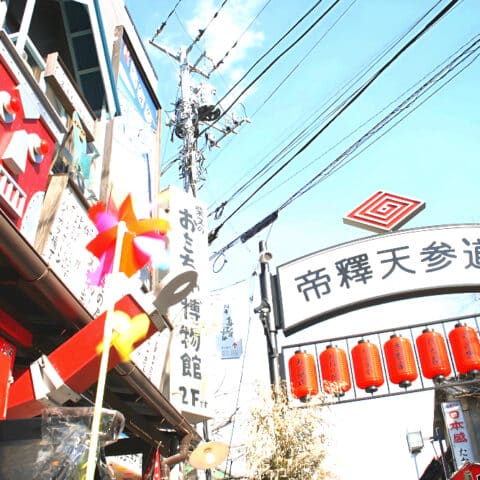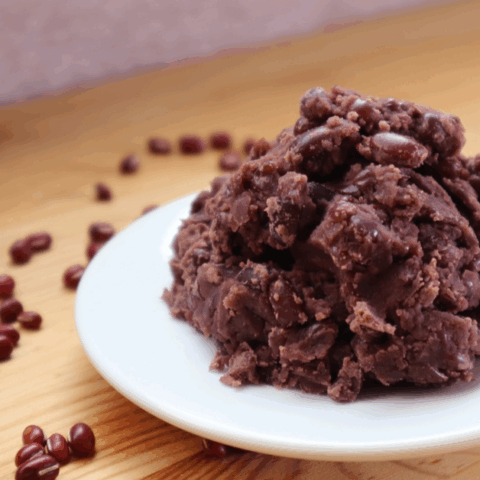
It’s chewy, soft, slightly sticky, and sometimes has sweet fillings. It also pairs deliciously with green tea (matcha included) and is considered one of Japan’s oldest, traditional desserts. Have you guessed it yet? You’re CORRECT! It’s Mochi (もち)!
Considered a sub-group of Wagashi in Japan (confections), you may find it being thoroughly enjoyed with green tea. Quite a delicious pairing!
Now, have you tried it yet? Why not? Of course, there are many pre-made versions out there for you to reach for. However, I would definitely advocate for you to try the freshly pounded mochi found at the street stalls in Japan. (An experience of a lifetime!)
Small Mochistory:
It’s time for mochi history! There isn’t much really to it. Dating back to the 6th century, mochi was simply made to be used as offerings at religious ceremonies, which later transitioned to having importance at festivities. As time progressed, mochi has evolved a lot as it has not only become a significant part of Japanese culture but a favoured dessert/snack to be enjoyed internationally.

Mochi Mallet used for pounding!
How Is It Made:
It’s a simple mixture of steamed short-grain glutinous rice with water and sugar that’s been continuously pounded. You may have seen the infamous video of 2 workers vigorously pounding mochi with both a mallet and their hands. (Such quick motions!). However, this traditional method may not be so commonly seen on the streets as machines are definitely taking over the workforce.
The Modern Substitute:
Nowadays, it’s typical to see a bag of labelled Mochiko flour sold on the shelves of a store. Don’t worry, you aren’t breaking any rules by using the flour. It just so happened that some people find using this much more convenient and take less time to prepare their favourite snack at home! I’ve tried it as well, and I can say it’s still the same delicious texture!
Now how many different types can you guess? You don’t need fancy tools to make them because guess what, mochi really depends on the flavour you make or the filling you tuck into them. Let’s learn more! Shall we?
The Classics:

Delicious Daifuku
Daifuku Mochi
Oh, the joy of biting into a classic mochi filled with traditional red bean paste (learn more here)! This is called Daifuku, which has a smooth and chewy layer of mochi skin concealing an unexpectedly sweet treat inside.

Huge strawberries encased in daifuku
However, from the Winter season, you are sure to find the Ichigo Daifuku. Similar to the Daifuku, the only difference lies in the huge, juicy Strawberry in the center, giving an entirely different delicacy to indulge in!

Bean paste-covered mochi
Botamochi/Ohagi:
Now what if we did the absolute reverse, where the mochi remains tucked inside as it gets enveloped in a layer of sweet red bean paste? Never thought of it? Actually, some did and it’s quite a surprise! Bite into the sweetness first, as you eventually make your way to the chewy rice cake.
Usually, it is consumed for the Buddhist holiday; Ohigan, which occurs biannually. When eaten for the Spring equinox, it’s called Botamochi, as opposed to Autumn, where it’s called Ohagi.

Stretchy-looking mochi dusted with soybean flour Photo credit: Julius Lim on Instagram
Warabi Mochi
The texture of this mochi is one of its distinct features as it isn’t traditionally made from the usual rice flour, but instead is made from bracken starch (it comes from the rhizomes of a specific fern).
It’s clear and jelly-like, making it a refreshing treat that is particularly enjoyed during the summer season. Grab yourself some, and have a blast with warabi mochi rolled in soybean powder (kinako), and often served with black sugar syrup (kuromitsu).

Kuzu Mochi served with syrup and soybean powder Photo credit: studio presence on Shutterstock
Kuzu Mochi
If you like refreshing desserts for those hot days, then this one may be right up your alley. Similar to warabi mochi, the starch of the Japanese arrowroot; Kuzu, is used to make this clear and jelly-like mochi.
Likewise, you can find these served with similar elements of soybean powder and black sugar syrup, but for an extra added sweetness, you can add a scoop of sweetened red bean paste (anko).

Distinctive green yomogi mochi
Kusa/Yomogi mochi
Did you hear Tsubaki-san call Tsukushi this name in the popular show, Hana Yori Dango (please tell me you’re a fan)? For sure I did not know what she meant, but later found that Yomogi was the name of a herb that’s actually used to make this type of mochi.
Yomogi makes this mochi a distinct green color and also gives the chewy rice cake a grassy flavour. Find these sweets prepared at a Japanese tea ceremony for your liking.
Seasonal mochi:

Traditional kagami mochi
Kagami Mochi – New Year’s Day (January 1st)
A prominent and significant item to most Japanese homes once the New Year rolls over, is called Kagami mochi! Made with 2 layers of rice cakes, they are usually topped off with citrus fruit and placed within the home as a symbol to represent the past year’s meeting with the new, and hope in welcoming good luck!
Find these a few days before New Year’s Day, and once it has arrived, it turns quite hard. You can still eat it though as people break it in a ritual with a hammer or their hands. The small pieces are then eaten in dishes such as the traditional red bean soup.

Three colours and a diamond shape make Hishi mochi. Photo credit: Vikkella on Shutterstock
Hishi Mochi – Girls Day (March 3rd)
Annually, March 3rd sees most Japanese households celebrating Hinamatsuri, also known as Girls Day. It’s dedicated to praying for the happiness and prosperity of the daughters in a house. Hishi mochi is a tri-coloured, diamond-shaped rice cake you would commonly find at this time, and symbolizes fertility amongst the girls.

Beautiful pink Sakura mochi Photo credit: Katie from Pixabay
Sakura Mochi – Sakura Season (Between March and April)
When pink petals begin to paint the views across Japan, only then you may spot this! Sakura mochi is found in the spring season and is made to depict the Sakura flower. The rice is coloured pink and pounded partially to have a lumpier texture. With sweet bean paste filled inside, it’s ultimately wrapped with a pickled sakura leaf.
Edible? Yes! The leaf is included for enjoyment, but some prefer not to. However, it adds a salty contrast of flavour with the sweetness. (Please enjoy!)
Note: Sakura mochi is also a celebratory item eaten on Hinamatsuri (Girl’s Day).

Neatly-wrapped kashiwa mochi
Kashiwa Mochi – Children’s Day (May 5th)
If you happen to see some carp streamers flying in the wind every May 5th, then families are greatly celebrating what is known as Kodomo no Hi (Children’s Day). In celebration of the Japanese children’s well-being and prosperity, they are served with Kashiwa mochi.
The chewy, rice cake is traditionally wrapped with an oak leaf. Careful though! This leaf is not meant to be eaten like the one found on the sakura mochi, as its main purpose lies in adding a subtle flavour. Make sure to peel it off before eating!
Regional Mochi:

Matcha-flavoured yatsuhashi
Yatsuhashi
If you are heading out to the Kansai region, this is something you must not leave without. Yatsuhashi is found mainly in Kyoto prefecture and is also considered an iconic omiyage (souvenir). Learn more about Yatsuhashi on our blog here!
When steamed, the rolls of mochi are cut into squares, filled with bean paste and folded over to form some delicious-looking triangles. Different colours may mean different flavours so be sure to enjoy them all!

Delicious Akafuku served with tea Photo credit: Jasonyan on Shutterstock
Akafuku Mochi
Prepared only in Mie prefecture, this mochi is similar to that of Botamochi, as red bean paste covers a soft but firm piece of rice cake. However, the red bean paste used is much smoother (skins are removed), and is used to make a distinct shape which is said to symbolize the clear water flowing through the Isuzu River.

Beautiful, coloured, filled mochi rice cakes
Modern Mochi Trend
Such a modern twist on a traditional sweet! Instead of filling the inside with the usual sweet bean paste, we have a scoop of cold, creamy goodness just waiting for you at the center. It’s quite an interesting pair! Trust me, I’ve had it and it’s especially yummy!
It’s such a cool treat to make and enjoy at home, but I will warn you from experience to work quickly or in a frozen room. It melts super quick!
Some shops have decided to get creative with the fillings and make flavoured cream, From dragonfruit to peach flavours, it’s like a sweet marshmallow just waiting to be eaten! (Yum)
Well, we’ve covered tons of mochi today and I wonder if you guessed them all? Don’t worry, I did not either, but I’m sure we’re all pretty knowledgeable now about Japan’s mochi industry. Were you amazed? Not only is mochi a traditional sweet you may find at a local store, but it holds symbolic meanings as well that are rooted in the country’s culture. Thank you very MOCH(I) for learning with me!
If you want to learn about some of the best places to try these varieties of mochi and get other recommendations for your next trip to Japan, book a Personal Consulting Call with our experts!




